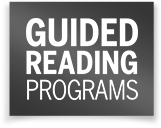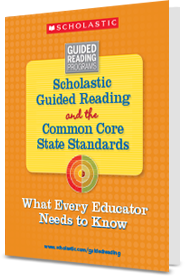Help all students progress through reading levels with confidence
The three components of text complexity include quantitative, qualitative, and reader and task measures. On the quantitative end, the Lexile Range for each grade-level collection meets or exceeds CCSS recommendations. Additionally, each library has been carefully leveled using a qualitative measure system factoring in reader variables such as vocabulary, language complexity, length of text, and theme.
-
Teachers prompt and support students' reading by balancing the difficulty of the text with support for students reading the text.
-
Engaging texts motivate students to read and improve comprehension skills. As teachers work with students in small groups, students are challenged to engage with texts at higher reading levels and greater text complexity.
-
A wide range of texts in the Scholastic Guided Reading programs exposes students to a variety of text types across content areas. As students work with these texts, they build a core foundation of literacy skills essential for growing into stronger readers.










 Scholastic Guided Reading provides a fast track to successful independent reading and an
indispensable first step in helping achieve the objectives of the Common Core State Standards.
Scholastic Guided Reading provides a fast track to successful independent reading and an
indispensable first step in helping achieve the objectives of the Common Core State Standards.

